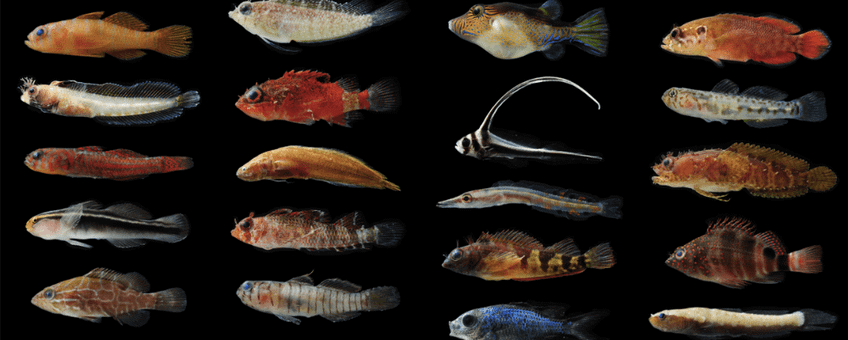
Unveiling hidden fish communities with FARMS
Dutch Caribbean Nature Alliance (DCNA)From shallow tide pools to the deep sea, unique evolutionary traits allow fish to occupy every corner of the ocean. Historically, fish populations have been tracked using visual surveys, which can often overlook small or bottom-associated (cryptobenthic) species. A collaborative study, led by the University of Texas at Austin, explored a new technique to quantify these difficult to find species by utilizing a Fish-specific Autonomous Reef Monitoring Structures (FARMS).
FARMS
These FARMS are specifically created using easily accessible and affordable materials. Through a combination of stacked PVC pipes and mesh baskets, FARMS can be deployed in a wide variety of locations to investigate these cryptobenthic populations. Although FARMS may not fully replicate the surrounding environment, especially in habitats with no solid structures, this study did find these structures to be an efficient technique for sampling local diversity, capturing a higher number of species per unit area compared to other methods.
Curacao
During this study, FARMS were deployed across six locations (Hawaii, Texas, Panama, Saudi Arabia, Brazil and Curacao). The FARMS deployed off Curacao were used to explore deeper areas of reef, placed at 60, 146 and 223 metres depth. Due to the limitations for SCUBA-based research, deep reefs are some of the least explored ecosystems and the vast majority of deep reef research has relied on visual counts. Accordingly, one of the FARMS captured a species of goby (Psilotris laurae) which has never before been documented on Curacao. This highlights the ability of these systems to provide a new, improved way of sampling populations, particularly in deep or hard to reach locations.

Impacts
Overall, FARMS are considered a simple, standardized, and cost-effective technique for studying cryptobenthic fish communities in habitats where other sampling methods are considered impractical or restricted. The study highlighted the potential of FARMS for exploring under sampled habitats, such as deep reefs, where they could contribute to the discovery of new species and enhance our understanding of cryptobenthic fish diversity and distribution patterns.
More information
- The article Using standardized fish-specific autonomous reef monitoring structures (FARMS) to quantify cryptobenthic fish communities can be downloaded from the Dutch Caribbean Biodiversity Database.
DCNA
The Dutch Caribbean Nature Alliance (DCNA) supports science communication and outreach in the Dutch Caribbean region by making nature-related scientific information more widely available through amongst others the Dutch Caribbean Biodiversity Database, DCNA’s news platform BioNews and the press. This article contains the results from several scientific studies but the studies themselves are not DCNA studies. No rights can be derived from the content. DCNA is not liable for the content and the (in) direct impacts resulting from publishing this article.
Text: DCNA
Photo's: Simon Brandl
